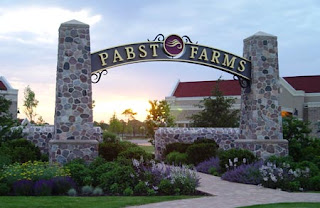 Last night I had a dream about my favorite childhood place—the home where my grandpa (Pop) lived on Genesee Lake in Wisconsin. My mom and her sisters’ childhood home was near the Owens farm in Dousman where Pop spent the bulk of his farming career.
Last night I had a dream about my favorite childhood place—the home where my grandpa (Pop) lived on Genesee Lake in Wisconsin. My mom and her sisters’ childhood home was near the Owens farm in Dousman where Pop spent the bulk of his farming career.
Playing in the lake with my cousins was the best part, but it was also fun to accompany Pop to the farm—to learn about cultivation, germination, soil irrigation systems…. Occasionally we visited neighboring farms. I can remember running the cornfield rows of the Pabst farms with my cousins. The last time I visited the area in 2006, The Pabst Farms was a development—complete with suburban neighborhoods, a business center, a YMCA. What a funny foreign weirdness that gave me.
I’m realizing more and more how touchy this local vs. federal ownership issue has historically been around here. As irritating as it can be, it seems to me that the ongoing conversation between all the stakeholders has the most potential to be an effective way to tend the land . It is possible that it takes a bureaucracy to bring the broad and narrow angles together. You can bet that I wouldn’t have initiated any prescribed burns on the properties near us—but I was mighty thankful in 2006 that somebody did.
As we sit at the dinner table and discuss government and politics with the kids, there are plenty of times that it is tough to justify the systems that we are part of. This is one time where we can feel proud of those systems. And that is a good thing.
.

